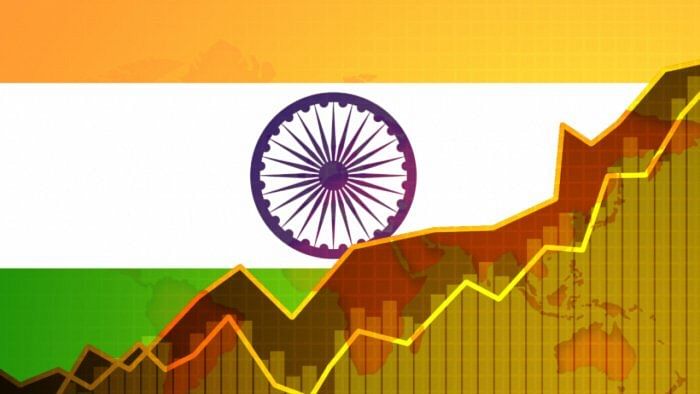
The Union government was a big lender to the states during the 1990s, meeting about 50 per cent of their borrowing. States’ finances were in a big mess and the practice of central loans was a major contributor to this trend.
Both the Centre and the states took significant policy steps to redress the situation. Net loans to the states fell below zero for the first time in 2002-03 during the Atal Bihari Vajpayee-led National Democratic Alliance (NDA) government. The Congress-led United Progressive Alliance (UPA) government continued reforms and discontinued central loans to states in 2005-06.
Modi-led NDA resumes lending
By 2011-12, the states were returning the loans to the Centre, dismantling the lender-borrower relationship between them in the process. The states net-repaid central loans equal to 4.7 percent of their borrowing that year. By 2019-20, the outstanding central loans to the states fell to less than Rs 75,000 crore. The day when states would become free from the Union government’s debt-yoke was drawing near.
Ostensibly for expanding capital expenditure, the Centre re-initiated the pernicious practice of lending to the states in 2020-21. It began with an outlay of Rs 12,000 crore in 2020-21, increasing to Rs 15,000 crore in 2021-22.
The scheme outlay exploded to Rs 1 lakh-crore in 2022-23 (revised downwards to Rs 76,000 crore in RE, with the Union government finally releasing about Rs 81,000 crore of which Rs 35,000 crore was in March 2022). For 2023-24, the capex loan outlay has been further raised to Rs 1.3 lakh-crore (as part of enhanced capex outlay of Rs 10 lakh-crore).
The capex loans go to the states in two broad buckets — one is supposed to be a untied bucket, with the other linked to conditions, reforms, and specified expenditures.
Numerous conditions
The untied 20 percent of capex loan outlay was divided, in 2022-23, into five buckets — PM Gati Shakti expenditures (Rs 5,000 crore), priority village roads (Rs 4,000 crore), incentives for digitisation (Rs 2,000 crore), optical fibre cable network (Rs 3,000 crore), and incentives urban reforms (Rs 6,000 crore).
All allocations were tied to many conditions. For example, incentive for digitisation was subject to six conditions, one of which was mandatory use of Aadhaar in all subsidy expenditures.
The Centre identified six new buckets with new conditions for capex loans in 2023-24. Loans of Rs 3,000 crore are linked to scrapping old vehicles, Rs 15,000 crore to urban planning reforms, Rs 5,000 crore for making municipalities creditworthy to issue municipal bonds, Rs 2,000 crore to police housing, Rs 5,000 crore for constructing unity malls, and Rs 5,000 crore for building children libraries.
These conditions make states virtually the Centre’s subordinates.
Fiscal and political conditions
The government classifies bulk of capex loans — Rs 80,000 crore in 2022-23 and Rs 1 lakh-crore in 2023-24 — as without conditions. That is not true though. Serious fiscal and political conditions are attached thereto.
The states must agree to use only central names for all CSSs (earmarking credit to Centre exclusively), even though states end up funding more than 50 percent CSSs expenditure.
States must also accept a new procedure for release of CSSs funds by creating a single bank account to make all transactions visible to the Union government. The states must also pay interest attributable to Union government funds to the Centre.
An additional condition — integration of state treasuries with the central fund management system — has been prescribed for 2023-24.
Capex loans subjugates states
Article 293(3) of the Constitution subjects a state to take approval of the Union government for borrowing in case it has outstanding loans to the Centre. By sweetening capex loans with a longer repayment period of 50 years and charging no interest, the Centre is luring the states to accept this central control for eternity.
States have normal borrowing space up to 3 percent of their GSDP, which amounts to about Rs 9 lakh-crore for 2023-24. Though capex loans are additional to this borrowing space, they do not need this additional space.
Barring 2020-21, the states have never, since 2005-06, borrowed more than 3 percent of their GSDP.
Don’t fall for the trap
Until 2020, the Union government provided only grants to nudge states to undertake expenditures considered desirable from national perspective or to undertake reforms. The Centre sacrifices only interest on capex loans — making these far disadvantageous to the states compared to receiving grants.
By providing interest-free capex loans to nudge the states to undertake desired expenditures/reforms, the Union government is in fact short-changing the states.
The states ruled by the BJP may not be worried about these considerations today. However, 50 years is a long period. Mortgaging states’ borrowing sovereignty and receiving only interest benefit in place of full grant will hurt them in the future.
Non-BJP states have objected to the scheme and its conditionalities — some states have stayed away from these loans. Some fiscally-strained non-BJP states seem getting tempted and are unwittingly falling into this trap.
Capex loans are not worth it for both BJP and non-BJP states.
(Subhash Chandra Garg is former Finance & Economic Affairs Secretary, and author of ‘The Ten Trillion Dream’ and ‘Explanation and Commentary on Budget 2023-24’.)
Disclaimer: The views expressed above are the author's own. They do not necessarily reflect the views of DH.